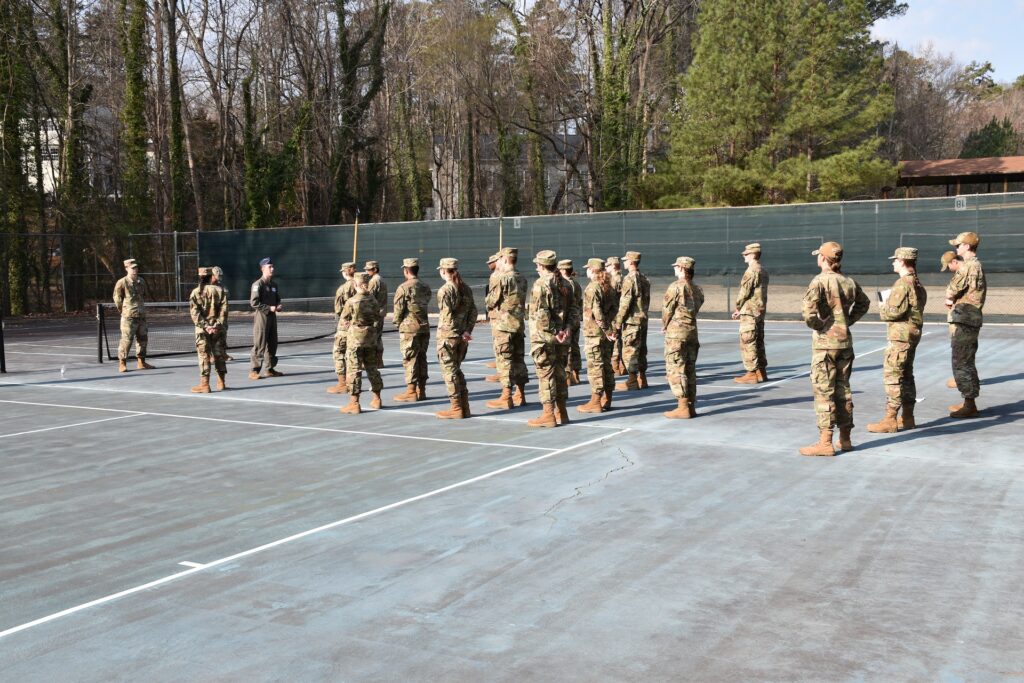Applying to colleges can feel overwhelming, especially while you’re dealing with your senior year of high school! Thankfully, there is a clear series of steps you can take and follow to ensure you’re getting everything done ahead of deadlines. Here are 11 steps you can follow in order to apply to your colleges from identifying the right schools for you and waiting for your application answers!
Step-by-Step Guide: How to Apply to Colleges
Step 1: Write Down What You’re Looking For
Before anything else in the college application process, you need to identify what you’re looking for in a college. You need to consider:
- Your potential or intended major
- Size of the school
- Location
- City vs town vs rural
- Extracurriculars
- Cost (though sticker price isn’t always accurate, we’ll talk a bit more about that later!)
- Size of the classes (lecture vs intimate)
- Your goals after college. Do you plan on going straight into the workforce or aiming for a higher degree such as a Master’s?
- What else is important to you in a college?
Once you have these written out, you can move on to the next step. Remember though: your decisions here are not written in stone! You can always change your wants and needs in the coming months and even years.

Step 2. Find Schools (And Narrow Them Down)
Your second step to applying for colleges is to find schools that fit your wants, needs, and goals. You can do this by narrowing down your options as you go.
Start with a list: write down any school that interests you or is suggested to you. Then, when you have a solid list, start comparing them. You’ll want to compare things like the program of your intended major (how good is it?), the location, the size of the school, location, and more. Everything you wrote down as important to you should be compared.
You can compare schools by
- Talking to alumni
- Talking to current students
- Looking at the college’s website
- See what type of extracurriculars and activities they offer
- Looking at the college’s social media accounts
- Using a spreadsheet to compare other aspects of the schools
- Make a list of pros and cons of each
If you discover a school on your list doesn’t fit any of your interests, cross it off.
You’ll also want to keep your own achievements in mind. Do you match what a school is looking for in a student? While you may not tick off every box a university is looking for, such as Harvard, that doesn’t mean you should automatically cross it off the list. In fact, you want a balanced list of matches, safeties, and reaches.
A match means you fit everything the college is looking for and you have a good chance of being accepted.
A safety school means you’re far ahead of their requirements and you are almost guaranteed an acceptance letter.
A reach school is one that may have a low acceptance rate and high requirements from its future students, but there is a slight chance you’ll be accepted.
A balanced list of these can give you plenty of options down the line. Just remember to be honest with your achievements, grades, and abilities, or you could find your list skewed in the wrong direction! If you’re not sure how to do this or want someone to review your list of potential schools, be sure to talk to your high school guidance counselor.
By the end of creating this list, you should have 8 colleges you want to apply to.
Step 3. Decide When You Want to Apply
Colleges have different application cycles that will impact how and when you apply. The four more common types are: Early Action, Early Decision, Regular Decision, and Rolling Admission. Understanding the difference between these and how they relate to your goals is essential to the application process.
When it comes to application dates, you usually have a few options:
- Early Action
- Early Action is the step of applying to colleges before Regular Admission. It shows the school you’re very interested in attending and you’ll hear back faster.
- Deadline: Usually November 1st or 15th
- Students will hear back from the school around mid-December
- Early Decision
- Early Decision allows you to apply to schools before the rest of students, but this is a binding contract. If you are accepted, you have to attend.
- You can only apply to one school under Early Decision.
- You should only apply to a school under Early Decision if you are absolutely sure you want to attend if accepted.
- Deadline: Usually November 1st or 15th
- Students will hear back from the school around mid-December
- Early Decision II
- Similar to Early Decision, but has a later deadline. Not all schools offer a second ED.
- Deadline: Usually January 1st
- Students will hear back around mid-February
- Regular Decision
- This is when most students apply to college.
- Deadline: Usually January 1st
- Students will hear back in March or April
- Rolling Admission
- Rolling Admission applications means the school accepts admissions year-round. Though there is no set deadline, these colleges will have priority deadlines which means students who apply before this date are more likely to be accepted than those who apply after.
- Colleges also have deadlines for when you can attend the college that year. If you apply too close to the fall semester, for example, you may not be allowed to attend until spring or the following year.
- Every school has different rolling admission deadlines and cut-off dates.
Understanding the differences between these admission cycles will help you decide the right one for you. For example, if you’re not completely sure you want to attend one school, you definitely won’t want to apply under Early Decision. But if you’re absolutely positive you want to improve your chances of getting into your dream school, you will want to consider applying under Early Decision or Early Action.
This decision will also impact when you need to start and complete your application.
Step 4: Write Down any Deadlines
Next up, you’ll want to write down any important deadlines, starting with your application deadlines. But you’ll also need to track the last days for SAT or ACT test result submissions, interview dates, scholarship application deadlines, and more.
Never wait until the last day to submit this information, either! Things can go wrong from technical problems to missing pieces of applications. You don’t want to discover on December 31st you’re missing one of the necessary parts of your college application that’s due on January 1st!
And deadlines also don’t have to be hard dates. You’ll also want to plan ahead and track things like asking for letters of recommendation, meetings with your high school guidance counselor, writing and proofreading your essay, study time for the SAT and ACT, and anything else that is necessary for senior year and your college applications.
Step 5: Apply for FAFSA
One other important date you should be paying attention to is October 1st. This is when the Free Application for Federal Student Aid (FAFSA) is released for the upcoming school year. While the deadline is technically June of that school year, you never want to wait that long to complete it! In fact, you should be submitting your FAFSA as soon as possible.
Federal student loans will never run out, but institutional grant aid can. And many schools have their own deadlines for when your FAFSA needs to be submitted in order to be considered for these financial aid packages.
Therefore, you should always be completing your FAFSA on October 1st or shortly after. Gather everything you need ahead of time so you don’t have to hunt down vital information later on!
Step 6: Visit Campuses
Before you apply to colleges, you should try to visit some of the campuses. Physically being at a school is not the same as seeing a virtual tour. You can take the opportunity to walk around campus, the town, or take an official college tour where you can ask questions.
However, for some students, this isn’t always feasible, especially if the school is out of state. If you can’t visit colleges before you apply or you only have the chance to visit schools once, you may want to instead visit after you have acceptance letters in hand.
Step 7: Take the SAT and/or ACT
This is also the time you should be taking the SAT and/or the ACT for the second or third time. Most schools require you to submit your test results sometime in December, but if you’re applying under Early Action or Early Decision, you will need your SAT/ACT in before then.
Even if schools don’t require the SAT or ACT, it’s still a good idea to take it! They may give you the extra edge you need over other students.
Step 8: Ask for Letters of Recommendation
Ask for letters of recommendation from teachers, counselors, and other influential people in your life as soon as possible. Teachers especially have busy schedules and will need time to write the letter – and they will be asked by other students, too! By getting in your request as soon as possible, you have a much better chance of getting it earlier than other students.
Asking earlier also gives you wiggle room in case the adult forgets or doesn’t write it. You’ll have the opportunity to ask someone else.
Step 9: Write Essays
Most college applications require you to write essays and this is definitely not something you want to complete last minute. You might be thinking, “It’s only 500 words! I can get this done in one night!” but that’s a bad approach to a vital part of your application.
Writing a solid college essay means brainstorming various ideas, considering the question or prompt the school gave you, writing the piece, reviewing it, and letting others proofread it for you. All of this takes time. Writing it in one night in a rush is a surefire way to have a lackluster essay. Your piece needs to be impactful and the only way to do that is to take your time with it.
Step 10: Complete and Submit Applications
Make sure you follow all of the requirements when compiling your application. Common things include essays, high school transcripts, letters of recommendation, and a list of special awards or honors. Always pay attention to what the school is requesting, as every college application is different (unless you’re using the Common App, of course!).
As we stressed earlier, deadlines are vital. Do not miss them. In fact, it’s best to send in your application with plenty of time before it’s due, just in case. You don’t want a technical issue or lack of internet forcing you to miss an important deadline. Whether you use the Common App or drum one up from scratch, make sure it has everything you need and has been reviewed for spelling/grammar errors.
Step 11: Wait For Answers
And now it’s a waiting game! If you applied under Early Decision or Early Action, you should hear back by mid-December. This gives you time to complete other applications under Regular Decision if you want more options or if you received rejection letters. Regular Decision students should hear back by March or April.
There are other things you can do while you wait for your acceptance letters! You can visit campuses as they roll in, complete scholarship applications, design your dorm room, and, of course, focus on finishing your high school year with a bang. You may even want to start planning your high school graduation party!
There is one more deadline you’ll need to note, too: May 1st. For Early Action and Regular Decision applicants, your decision is almost always due on May 1st. This is when you need to let the schools you were accepted to your intention to attend or not.
Congratulations! You now know all the steps you’ll need to take to complete your college applications. Make sure to create a to-do list now and write down those important dates to ensure you don’t miss a step.
———————————————————————————————————–
Did you know that financial aid packages often come with acceptance letters? This is just another thing you’ll need to think about after your applications are all done. But these pieces of paper can be confusing. Schools rarely use one format to display this information, and you want to be sure you’re getting a good deal! College Raptor’s Financial Aid Offer Comparison tool helps you make sense of the data and numbers in front of you. Find it here for free!






